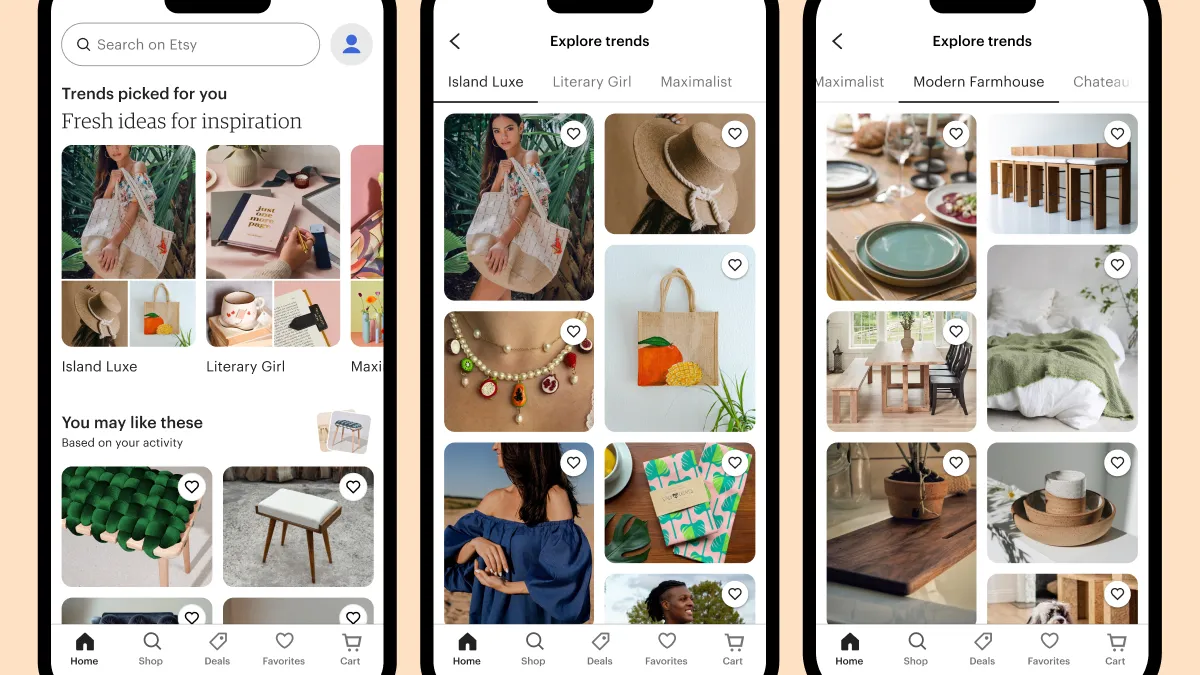Editor's note: The following is a guest post from Thom Brodeur-Kazanjian, CEO of lingerie, costumes and swimwear e-tailer Yandy.com.
Every year there are new stories out about Amazon devouring smaller online retailers, or the overwhelming dominance of the top 100 retailers in the marketplace. And I question the hysteria in these reports as I witness the success of small-to-midsize players.
The reality is, there is plenty of room for smart and aggressive entrepreneurs to be successful in retail, especially online.
As the CEO of a boutique online retailer of lingerie, intimates, costumes and swimwear — Yandy.com — I am consistently asked how we could even hope to compete with the giants of this sector like Victoria’s Secret, or e-commerce behemoths like Amazon, Alibaba and others. The simple answer is, if you stay flexible, seize opportunistic moments in the market quickly, and do the hard work of listening to your customer, you can create curated e-tail experiences for your core customer and drive loyalty among them.
Commodity shoppers are Amazon shoppers — but not everything is a commodity. Yandy most definitely isn’t a commodity e-tailer, and our customers rely on us for more than just "quick and cheap with free shipping."
1. Act quickly
One of the strategies that we’ve become particularly adept at is responding to market opportunities quickly when others exit or de-emphasize certain products and categories. When we see these behaviors in larger competitors, we quickly assess the opportunity and model Yandy’s ability to either compete, or win in, the category. And because we don’t have to refactor the impact of our decisions because of heavy brick-and-mortar retail investments, it is relatively easy for us to test and terminate, or test and launch to move quickly when opportunities arise.
When Frederick’s of Hollywood went bankrupt and closed its brick-and-mortar stores in 2015, we immediately boosted our SEO efforts to counter its increased online presence. When Victoria’s Secret exited the swimwear sector in late 2016, we acted quickly and doubled down on our private label swimwear design, production and marketing efforts. Our big push came in the form of unveiling our 2017 swimsuit collection at New York Fashion Week, obtaining a license from Paramount Pictures for a collection of Baywatch swimsuits, and securing the coveted swimwear sponsorship of the 2017 Miss USA competition. Year-to-date, we have tripled our swimwear business.
Another example can be found in MeUndies. The company’s founder, Jonathan Shokrian, simply had a bad experience shopping for underwear and wanted to improve upon it. He was tired of paying for over-priced and uncomfortable products, so he founded his own company with two simple promises — his underwear would be more cost effective and comfortable. Internet Retailer’s 2017 Online Apparel Retail Report’s reported that MeUndies grew its web sales 112.9% and raised $10.4 million from investors in 2016. Shokrian found a void in the marketplace and quickly filled it.
Victoria’s Secret also recently announced they will be de-emphasizing their bralette business going forward. Recognizing that Yandy’s customers rely on us for fashion forward yet accessible products, we immediately saw an opportunity to reallocate our product innovation, design and production resources to capitalize on a smaller part of our bra business — the bralette segment — in exchange for directing those resources to a structured bra business. We are better positioned to compete and win with millennial consumers in bralettes than we are in structure bras. So we are applying similar strategies we did in swimwear to this category, and expect to see even better results as swimwear is still a largely seasonal business but bralettes and bras are not.
2. Innovate on the customer experience
Birchbox is another example of an online player that's found a profitable niche.
The beauty platform, which offers customers a monthly box of personalized makeup, haircare and skincare samples delivered right to your door, has created a mobile app with personalization at its foundation. The founders wanted to bring the feeling of working with a beauty expert in a department store to the home, or on-the-go, by taking both novice and expert-level beauty customers through a series of questions to determine individual style and preference. The company, founded in 2010, reports annual sales of more than $200 million and has received more than $80 million from investors. (And is reportedly an acquisition target of Walmart.)
Connecting with your customers at a personal level and providing them with innovative tools that generate that intimate level of engagement with your brand is essential to maintaining a loyal customer-base. If online retailers can provide an atmosphere that feels akin to working in-person with a sales associate, you not only provide them with a better online experience, you give these customers more convenient options than driving to a brick-and-mortar location.
3. Adapt to new technology
Small and mid-sized e-tailers like Yandy benefit a bit from being more agile and flexible than many of our peers. When you’re built as a technology company that provides goods and services, this can be a bit of an advantage in terms of first-mover, or fast-mover among peers and competitors.
Artificial intelligence and virtual reality are two exciting developments that the retail industry is exploring heavily. The custom tailoring startup, Original Stitch, has integrated artificial intelligence to measure a user’s favorite button-down shirt and replicate it, rather than having the user measure themselves. Companies like VR Retail, Fundamental VR and more, are helping the retail industry utilize virtual reality to provide online shoppers with a virtual dressing room or to tell an immersive story about a brand. The use of these technologies can be a major game-changer.
No matter what you sell or where you sell it, there will always be opportunities to grow your market share. Success in retail, especially online, is typically awarded to the company that quickly jumps on opportunities with creative and comprehensive strategies, those that develop the most engaging customer experience, or those that use their flexibility to integrate convenient or exciting technology to connect with their customers.





















